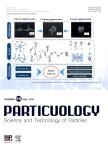Deliberation between PM1 and PM2.5 as air quality indicators based on comprehensive characterization of urban aerosols in Bangkok, Thailand
Deliberation between PM1 and PM2.5 as air quality indicators based on comprehensive characterization of urban aerosols in Bangkok, Thailand作者机构:Department of Chemical Engineering Kasetsart University Bangkok Thailand Kasetsart University Bangkok Thailand Wigner Centre for Physics of the Hungarian Academy of Sciences Budapest Hungary Faculty of Physics University of Vienna Vienna Austria
出 版 物:《Particuology》 (颗粒学报(英文版))
年 卷 期:2017年第15卷第6期
页 面:1-9页
核心收录:
学科分类:0817[工学-化学工程与技术] 08[工学] 0805[工学-材料科学与工程(可授工学、理学学位)] 0703[理学-化学] 0702[理学-物理学] 0801[工学-力学(可授工学、理学学位)]
基 金:Department of Chemical Engineering at Kasetsart University, Bangkok, Thailand Faculty of Environment at Kasetsart University, Bangkok, Thailand Faculty of Physics, University of Vienna, Austria
主 题:Urban aerosol PM-ffactions Carbonaceous particles Raman spectroscopy Thermal-optical analysis
摘 要:Urban ambient aerosols in the size range below 10 μm were measured and sampled for further evalua- tion (by Raman and Thermal-Optical analysis) of the collected material. The presented data shows that monitoring number and/or surface area concentrations besides the mass concentration provides valu- able information for a meaningful assessment of the actual ambient air quality. The aim of the study was to characterize the urban aerosols using various instruments, methods, and sampling conditions, and to determine whether a split of the PMzs size fraction at PM1 may deliver a more sensible indication of the actual air quality than the current standard of monitoring PMzs. We found substantial differences relating to this split. PM2.5 data frequently include particles from both mechanical and combustion processes, PM1 measurements can be used to better distinguish particles derived from these two sources. We measured number concentrations of PM1 with PM2.5-1 concurrently with particle mass concentration and found that the typical average particle diameter by mass in the urban aerosols investigated was in the range of 120 nm; this corresponded well with the particle number size distributions measured in real time. Raman spectral analysis and thermal-optical evaluation of the sampled material also suggested that it would be sensible to split the measurement of the PM2.5 fraction into PM1 and PM2.s-1 size fractions, especially for analysis of carbonaceous aerosol components using the DRI thermal/optical reflectance carbon analysis system



